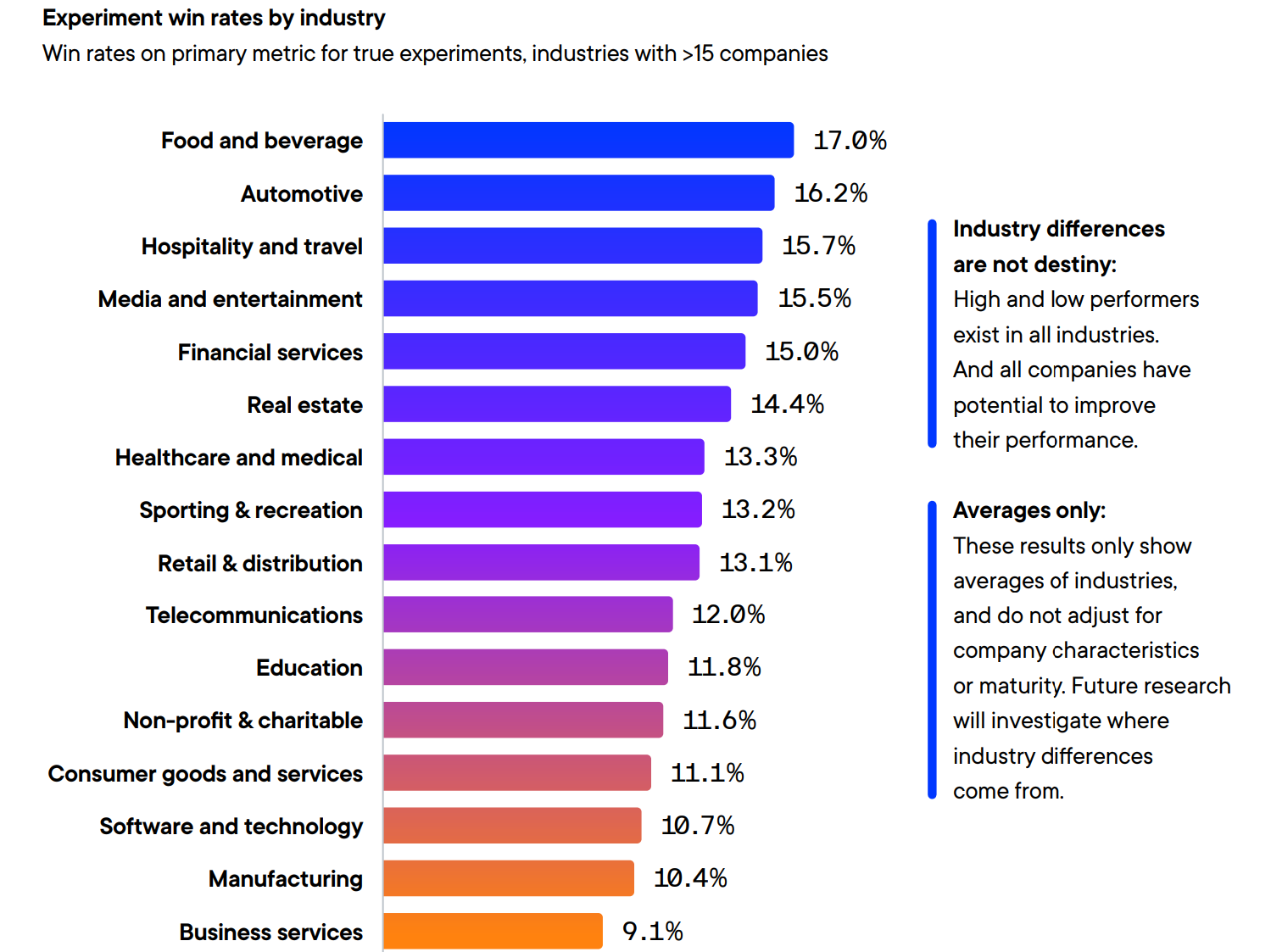Does Your A/B (Testing) Need to Meet C and D?
What do 127,000 experiments over five years from a variety of sectors, including fundraising, tell us about what’s required to run better experiments? First, let’s define better:
- higher chance of winning and
- bigger uplift,
- which creates a multiplier for expected impact; the % chance of winning * likely uplift = expected impact.
Here’s our take on the 4-part key to better testing based on a great report from Optimizely.
-
-
- Getting beyond A/B tests to A/B/C/D etc. testing. More variants = better. Three-quarters of tests are A/B tests with an expected win rate of 10% and low lift. Going to 4 variations doubles the expected win rate and nearly doubles the expected lift, which more than triples expected impact. The reason for this isn’t just more, it’s more diverse and novel ideas. The test version in an A/B test is very likely to be low risk and design by committee with hierarchal decision making to boot (i.e. boss decides, ugghhh). More variants is an idea liberator.
- Aim higher in the funnel. Last mile testing is, by definition, on the smallest group of people. Impacting revenue per visitor is a low impact experiment as is average donation value. There is much greater impact with search rate on site and registration rate. Search rate, for instance, has an expected return almost 5x that of a revenue per visitor goal. Fish where all the fish are, which ain’t the last mile optimization.
- More complex changes. Harvard Business School ran a regression analysis to determine the test attributes influencing lift size. One of the biggest factors is the degree of coding changes for the test. Wonky but senseful. Changes to text, color, image, layout, # of fields etc. are all simple, low to no code change tests. Bigger coding changes have a bigger impact on user experience and allow for bigger, bolder test ideas. Small test = small, expected impact. Great experiments require trying large leaps in user experience because low hanging fruit dries up. There is an inter-related cultural piece here. To get bigger tests approved likely means more senior leaders getting involved and invested. Nobody needs to approve (or care about) a button color test.
- More personalization. Only about half of experiments are personalized by what is known about the user – e.g., new/returning, geolocation, source, internal segmentation. Those that personalize are 41% higher impact.
-
How does our sector stack up? Bottom third on win rates and remember, win rate is only half the equation that matters to impact. The other half, expected lift, is the Big 4 we just reviewed.

So how do you abide by the Big Four?
Testing more often isn’t enough and “winning” isn’t enough if your winning is A/B tests on low-end, no personalization ideas. You will always have a high failure rate, the question is how big your successes are. If small the failure can swamp out the upside.
The key from a testing guru at Amazon, “Pair complex tests with a theory. Theory and testing together can help firms unlock breakthrough performance”
Where can you get theory? Desk research, Ask a Behavioral Scientist, etc. Big wins are what matters, and it requires bigger, bolder thinking.
Kevin


